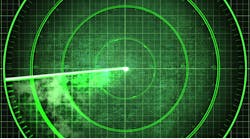Radar spatial resolution is essential when trying to identify more than one radar target simultaneously. To enhance the spatial resolution of a radar system, designers can apply waveform processing or use multiple antennas in multiple-input, multiple-output (MIMO) techniques. As an alternative approach, Moshe Mizrahi of the Department of Electrical and Computer Engineering, Bar-Ilan University, Ramat-Gan, Israel, and the Department of Electrical and Electronic Engineering, Ariel University, Israel, and fellow researchers based in Israel developed a technique that draws upon optical imaging.
In their approach, the size of the optical imaging lens is the same as the aperture of the radar antenna. The new method provides improved radar spatial resolution through frequency coding—various parts of the radar target are illuminated with different microwave frequencies using a transmission antenna array.
The array transmits the full frequency spectrum of interest, but portions of the frequency spectrum are used to illuminate different parts of the radar target. The received signals are processed to identify the different parts of the illuminated target with improved spatial resolution. The optical sensor works in collaboration with the frequency techniques, with the number of pixels in the optical sensor equivalent to the number of different frequency channels used for the radar detection.
Modeling performed with commercial electromagnetic (EM) simulation software showed the effectiveness of the new approach in detecting and differentiating four separate metallic targets in an experimental test setup. It was compared against a standard radar, which had difficulty in simultaneously detecting three different targets over the same test range. For radar experiments performed over a bandwidth of 4 GHz, the frequency-selective, optically aided process shows great promise as a means of improving the spatial resolution of radar systems for both one-dimensional (1D) and two-dimensional (2D) radar target data.
See “Improving Radar’s Spatial Recognition,” IEEE Microwave Magazine, Vol. 17, No. 10, October 2016, p. 28.


